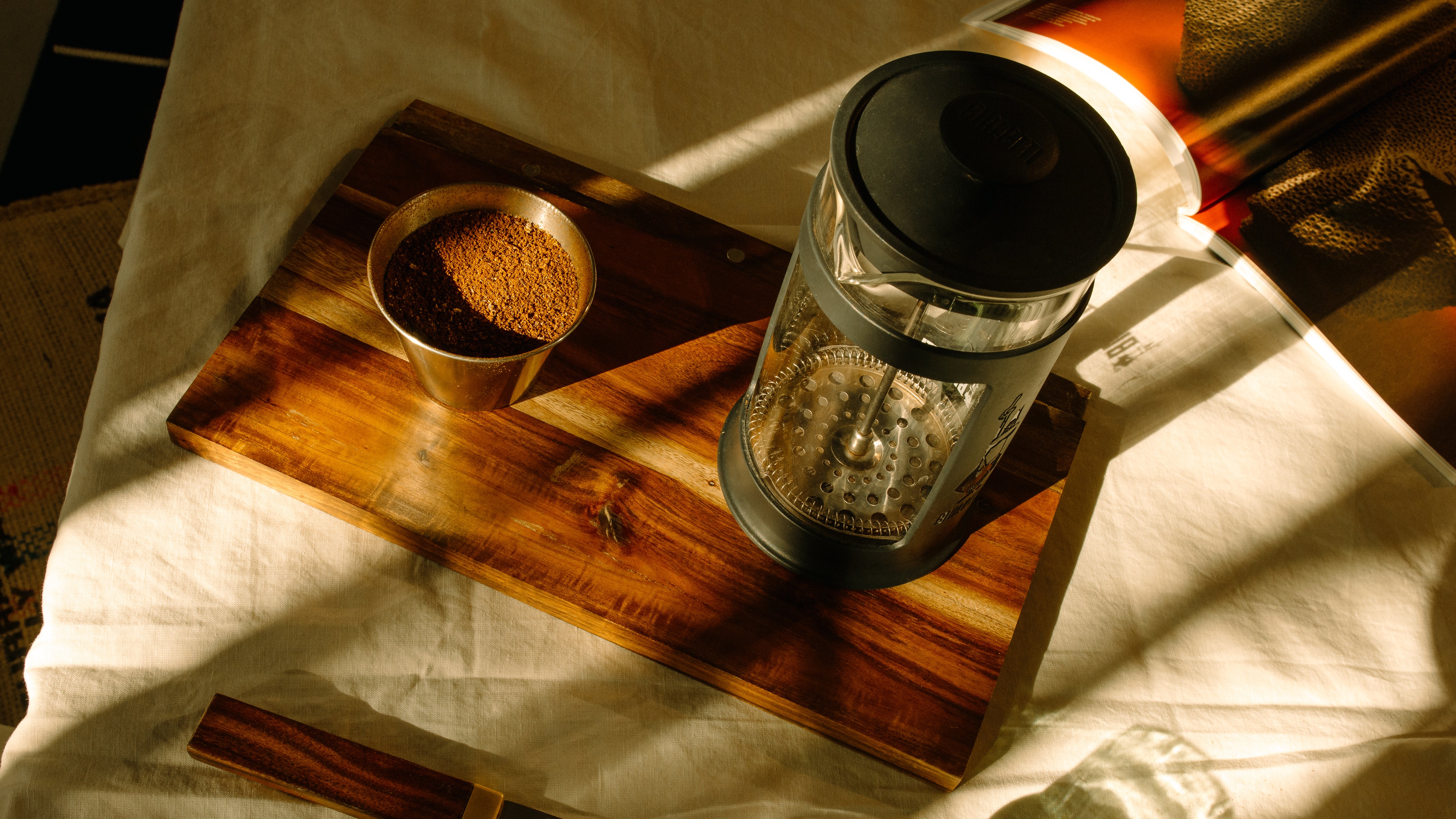The French press coffee maker is an option to prepare an excellent specialty coffee without complications. In this post we tell you about its history and some secrets so that you can make the most of it at home.

It is possible that if you are just starting out in the world of specialty coffee, it may be difficult to differentiate between so many different coffee makers. But the French press is one of the easiest to identify since it is a device with a metal mesh filter in which you only have to pour the coffee inside, pour boiling water, lower the plunger and let it rest for a few minutes.
The result is a cup with an intense aroma, full body and texture.
Caffettière or Caffettiera?
The origin of this coffee maker is disputed between the French and the Italians. Although no one knows for sure who invented it, what is clear is that a similar technique was already being used in French kitchens in the 19th century.
Legend has it that a Frenchman forgot to boil the water with the coffee, as was done at that time. Instead of boiling it again, he poured the water directly over the ground coffee and passed the mixture through a filter. And, as if by magic - by chance or recursion - the technique of the French press was born.
In any case, the first to patent the coffee maker was the Italian Attilio Calimani, in 1929, after making some technical improvements to prevent the coffee from escaping from the sides. Over the years, the design was perfected with different filters until the Swiss Faliero Bondanini popularized his model in the 1960s (first in France and then in the rest of Europe). He was in charge of launching and patenting his design in 1958, which was known by the French as Chambord.
French or Italian? What is really important is that this method allows us to prepare a good coffee in a simple and efficient way.

Today's French Press
The coffee maker we know today has a basic structure: a carafe that is usually cylindrical and can be made of glass, stainless steel, ceramic or plastic. It also has a lid through which passes a piston with a steel filter that adjusts to the edges of the container.
The function of the plunger or piston is to strain the coffee. There is a filtering system formed by metal discs or meshes that should be changed over time to prevent sediment from passing through.

Press like a pro
If you take into account these small tips you will be able to prepare your coffee like a professional.
- Be sure to (always!) use a specialty coffee.
- Grind the coffee making sure that the beans are coarse.
- If possible, use a mill with conical grinding wheels.
- Prepare coffee with filtered or low mineral water.
- Let the coffee rest for a maximum of five minutes, since if left for longer it will extract more bitterness.
Finally, we leave you with a tutorial in which you will learn everything you need to start preparing your specialty coffee in the French press.
Au revoir!






